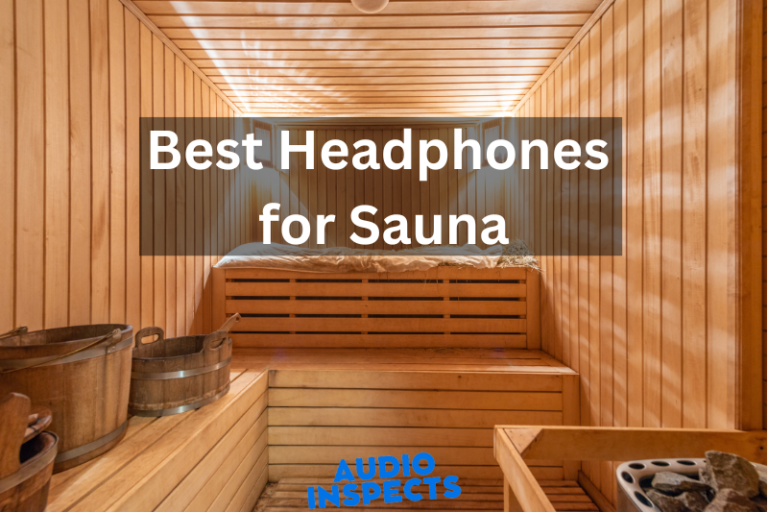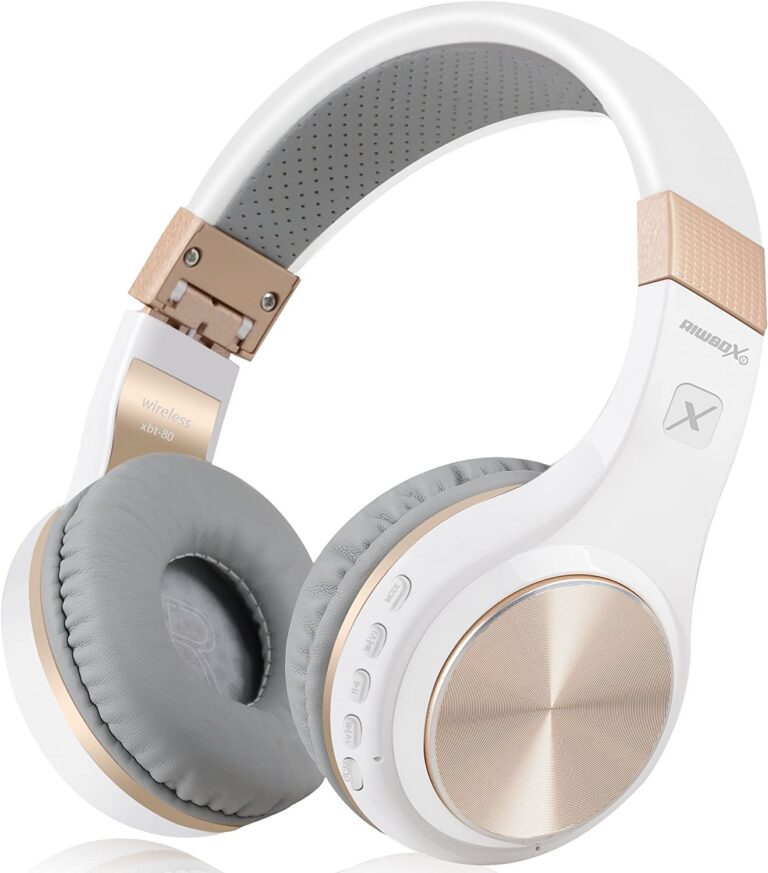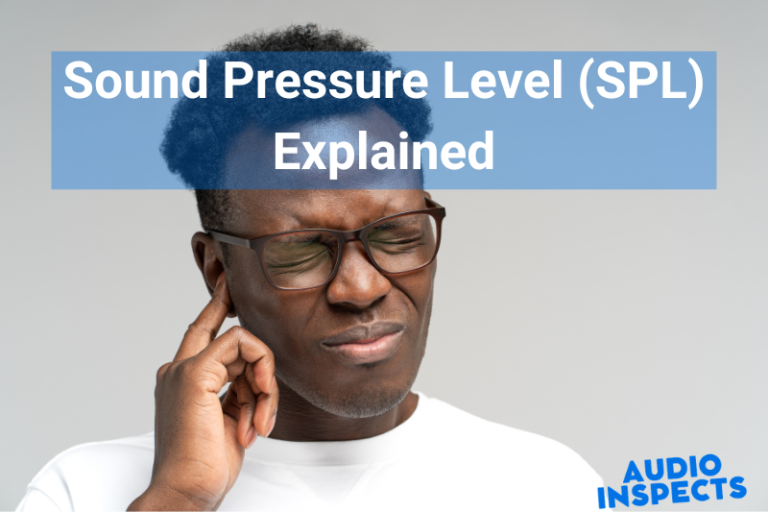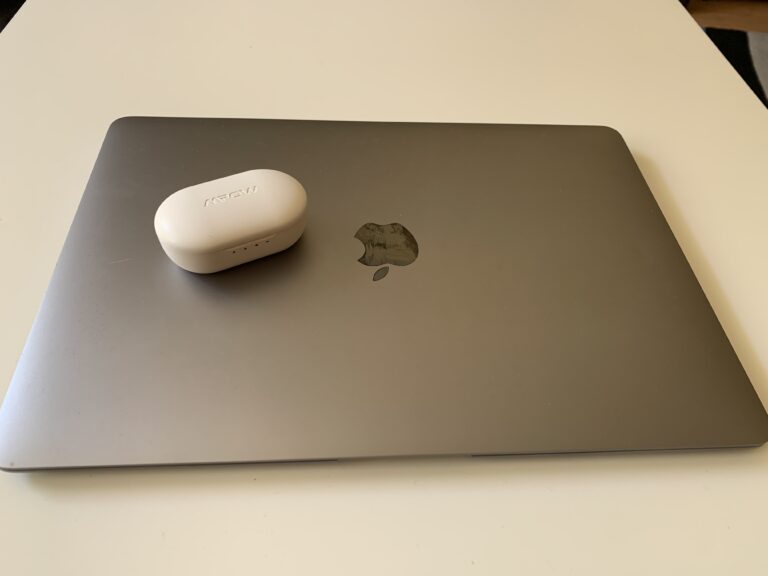The Ultimate Headphones Buying Guide
Looking to upgrade your headphones but not sure where to start? Look no further than this headphones buying guide! Whether you’re a music lover, gamer, or podcast enthusiast, this guide has got you covered. From wireless options to noise-cancelling technology, we’ll help you find the perfect pair that suits your needs and budget. Let’s dive in and discover the world of headphones together!
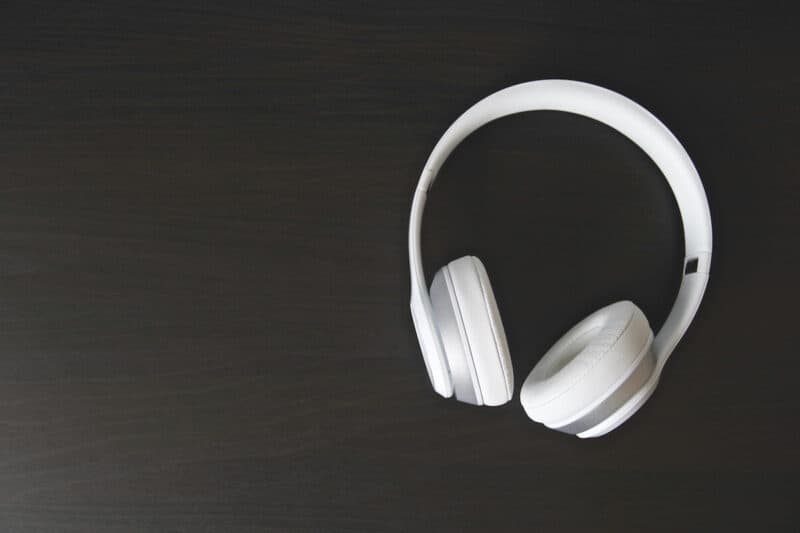
Types of Headphones by Sound Quality
One of the main differences in headphones is the sound quality. There are three main categories when it comes to sound quality.
- Hi-Fi Headphones
- Studio/Monitor Headphones
- Regular Headphones
High-Fidelity Headphones
Headphones are an essential part of every person’s life. They’re used to listening to music, watching movies, and keeping in touch with friends and family.
And that’s why you need High-Fidelity headphones. They’re designed for people who want to enjoy music of the best possible quality.
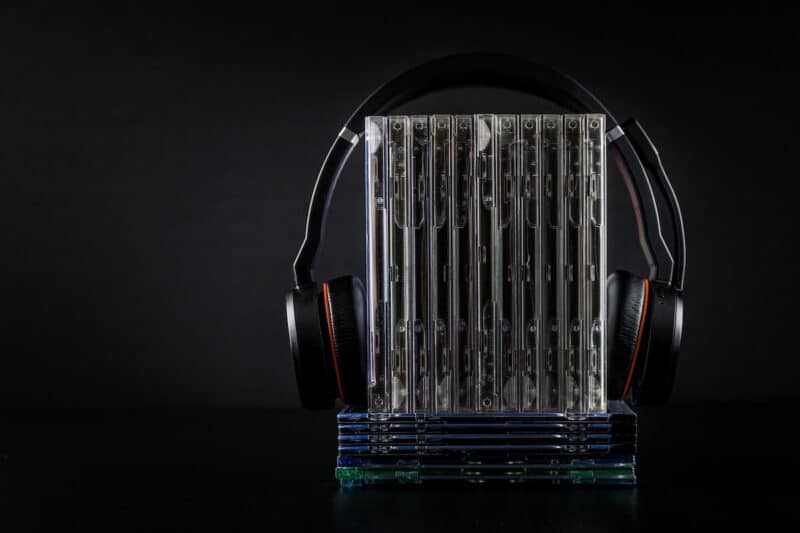
Hi-Fidelity headphones are a type that uses digital technology to convert analog audio signals into digital ones. They’re also known as hi-fi headphones because they provide better sound quality than regular ones.
These headphones are made with high-quality materials and features to give you a great listening experience. You can listen to music, watch movies, and make calls with them.
Why Should You Get High-Fidelity Headphones?
There are a lot of reasons why you should get high-fidelity headphones. For starters, they’re more comfortable than regular ones. They’re also made with a soft, flexible headband that won’t pinch your head.
They have a sleek design, so they look good on your ears. And they’re wireless, so you can take them with you anywhere. They’re also equipped with noise-canceling technology that helps you block out background noise. That means you can focus on what you’re doing without distractions.
There are a few disadvantages to getting high-fidelity headphones. For example, they’re more expensive than their regular counterparts. They’re also bulkier, which means they’re not as portable as regular headphones.
Studio/Monitor Headphones
Monitor headphones are an essential piece of equipment for any music enthusiast or professional musician. They provide excellent sound quality and accuracy, allowing you to hear every detail in your recordings.
Whether you’re mixing tracks in the studio or listening to music on the go, monitor headphones can help you get the most out of your audio experience. Unlike regular headphones, which focus on boosting bass and treble frequencies for a more exciting sound, monitor headphones emphasize clarity and accuracy so that what you hear is exactly what was recorded.
Why Should You Get Studio/Monitor Headphones?
This makes them ideal for critical listening tasks such as mixing and mastering audio in a studio environment. With their superior sound isolation capabilities, monitor headphones also make it easy to block out distractions when recording or editing audio files at home.
Monitor headphones provide the best listening experience available, with a wide range of features that can enhance your audio enjoyment. The sound quality is significantly better than regular headphones, with a rich and balanced soundstage and deep bass response. They are also made with soft and flexible headbands that won’t pinch or irritate your ears.
These headphones also come with noise-canceling technology that helps you block out background noise, allowing you to focus on your music without distractions. They are typically more expensive than regular headphones, but the improved audio quality is worth the cost.
Regular Headphones
They come in a variety of styles and designs, from basic earbuds to colorful on-ear and over-ear models. Regular headphones are usually less expensive than high-fidelity or studio/monitor headphones. They provide an adequate listening experience and are perfect for casual listening. They’re great for commuting, exercising, and other activities where you want to be able to enjoy your music without sacrificing comfort or sound quality.
Regular headphones usually come with basic features such as volume control and a microphone, making them well-suited for hands-free phone calls. They are lightweight and portable, so you can take them anywhere.
Overall, regular headphones are a great option for people who want a comfortable listening experience without breaking the bank. They provide decent sound quality and basic features at an affordable price.
Types of Headphones by Design
There are many types of headphones available in the market today. You’ll notice that there are in-ear headphones, on-ear headphones, over-ear headphones, and more.
Some headphones are designed to block external noise, while others are designed to allow outside sounds to pass through. Some have a microphone built into them so you can make phone calls, while others do not.
Some headphones are very lightweight, while others are quite heavy. All of these factors can impact the way you feel when you’re wearing them.
If you’re looking for a headphone that can do more than just listen to audio from one source, then you need to consider wireless headphones. Wireless headphones can be used with multiple devices simultaneously.
On-Ear Headphones
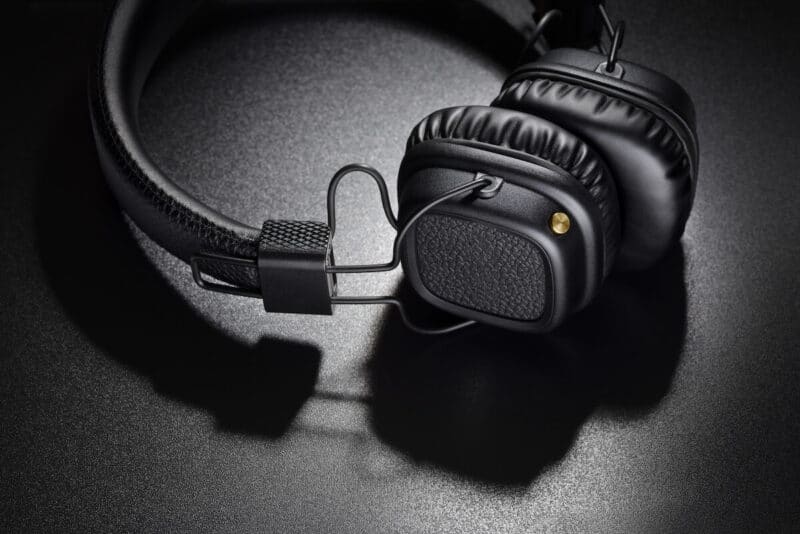
These are usually the most popular type of headphones in the market today and the least expensive, and they have high sound quality.
On-ear headphones are a great alternative to over-ear headphones because they’re smaller, lighter, and easier to store. They also have a better fit and are more comfortable.
A drawback is that on-ear headphones can be less durable than over-ear headphones. That’s because they’re not as well-built and have fewer parts.
So, how do you know which type of headphones is best for you? Well, it depends on what you want. If you want a more durable and convenient option, over-ear headphones are the way to go.
But if you want something that fits your lifestyle and is more comfortable, then on-ear headphones are your best choice.
Over-Ear Headphones
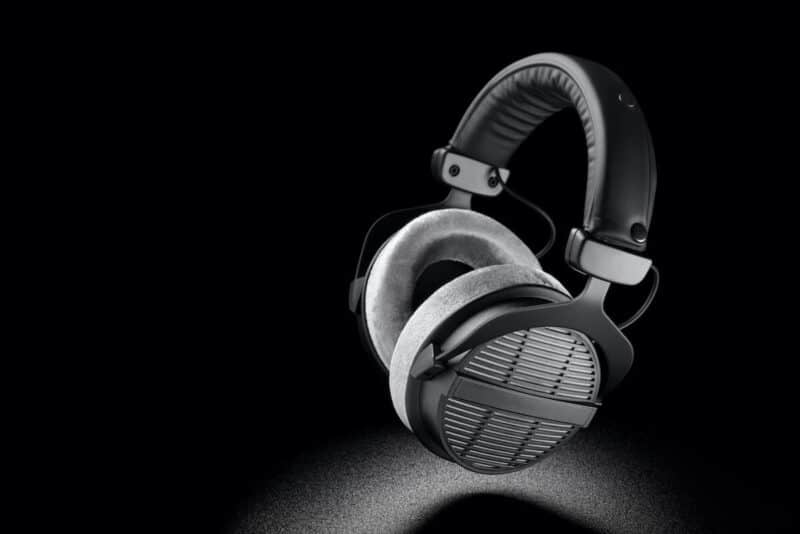
The ear cups are designed to fit over your ears. The foam material is soft and comfortable. The earcups have a little bit of a give when you put them on, but they’re not overly flexible.
There are two sets of controls on the left side of the headphones. You can adjust the volume by using the buttons on the right side. The volume control also has an automatic mute function so that you don’t have to manually turn the volume down.
The headphones are fairly lightweight and easy to handle. They’re designed to be comfortable and durable. The headphones have a carrying case for storage.
Closed-Back Headphones

These are usually the most expensive, and they’re the most comfortable to wear. They’re usually the best for listening to music.
If you’re looking for a pair of headphones that offer better noise attenuation and deeper bass, closed-back headphones are your best bet.
Closed-back headphones have a wider soundstage, which means the sound is more focused and can be heard better.
Open-Back Headphones

These are usually the most affordable, and they’re the least effective at blocking out background noise.
The open-back headphones are the best choice when you are working outdoors or at home. They offer a lot of flexibility. You can use them to listen to music while you’re exercising, listening to a podcast, or watching a movie.
Open-back headphones are designed with a wider soundstage, which makes them easier to hear in a crowded area.
Read our comprehensive guide on open-back vs. closed-back headphones.
In-Ear Headphones

These are usually the most convenient, and they’re the least expensive. They’re also the least effective at blocking out background noise.
In-ear headphones are smaller than regular headphones and fit into the ear canal, rather than over the top of the head. They are commonly used for listening to music, and they are also great for watching movies, playing games, and even making calls.
The newest in-ear headphones have a built-in microphone and speaker that allow you to answer calls without having to hold the device to your ear. They’re perfect for use in public places where holding the phone up to your ear could be distracting.
In-ear headphones are a great way to keep your music private. You can listen to your favorite tunes without worrying about others hearing them.
The best part of in-ear headphones is that they are super portable. You can easily take them with you on the go, and they’re small enough to fit into your pocket.
In-ear headphones are so small that you can actually wear them while you sleep. They’re great for listening to music while you’re trying to get to sleep at night.
If you’re looking for a new pair of headphones, in-ear headphones are a great option. They’re easy to carry around and are perfect for when you’re on the go.
Earbuds

These types of in-ear headphones are generally smaller than over-the-ear headphones and are preferred by people who wear glasses or hearing aids. They are very convenient, but may not have a great sound quality because they only cover part of your ears.
Headsets with Microphone
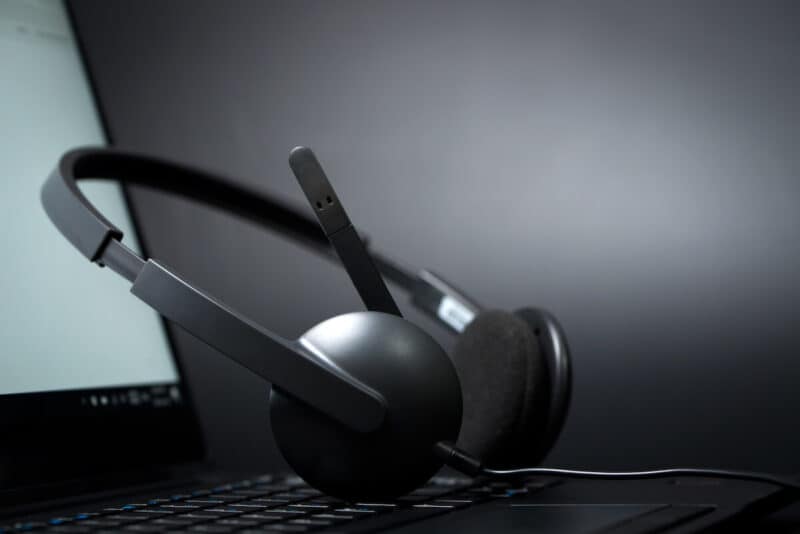
These are usually very expensive, and they’re very comfortable to wear. They’re usually the best for gaming or streaming.
A headset with a microphone can be a real lifesaver when playing games online. With a headset, you can easily communicate with other players and with your friends. You don’t have to worry about yelling or screaming because of the background noise.
You can also use a headset with a microphone to record audio and video while playing games. This is a great way to capture the gameplay.
In addition to these two uses, headsets with microphones can be used to make phone calls and talk to people on the internet.
Different Headphones Features
When it comes to choosing headphones, there are many different features to consider. From comfort and sound quality to noise cancellation and portability, each type of headphone has its own unique benefits.
Closed-back headphones offer superior noise attenuation and deeper bass while open-back headphones provide a wider soundstage for better hearing in crowded areas.
In-ear headphones are great for privacy when listening to music or phone calls, while headsets with microphones make online gaming more enjoyable by allowing players to communicate easily with their friends.
Noise-Canceling Headphones
Active Noise Cancelling (ANC) is a technology that was developed to reduce the amount of external noise that enters a person’s ears.
The ANC system uses a microphone to pick up the outside noise and a small speaker to play a sound at the same frequency as the noise. The sound waves from the speaker cancel out the noise.
The main advantage of active noise-canceling headphones is that they can reduce the ambient sounds that you hear. However, this does not mean that they can eliminate the sounds.
Types of Headphones by Connection
Wireless Headphones
UHF is a short-range, high-frequency wireless technology that operates on a frequency range between 300 and 1,600MHz. The advantage of this technology is that it can transmit signals at a very high speed (up to 2Mbps) without interference from other electronic devices. The downside of this technology is that it cannot be used when the signal is blocked by walls or objects.
Infrared headphones operate on a frequency range of 900 to 1,700MHz. The advantage of this technology is that it can be used in any environment, such as in the kitchen, bathroom, and outdoors. The downside of this technology is that it cannot transmit data at a high speed.
Bluetooth Headphones
Bluetooth headphones are a type of wireless headphones that use the Bluetooth standard. Bluetooth is a short-range wireless technology that allows you to connect your mobile device to various other devices such as a speaker system, a car stereo, or even a television set.
Bluetooth headphones have been around for a while and they have been improved over time. They have become more portable and easier to use than their predecessors. These headphones can be used for music listening, video watching, and voice calling.
Bluetooth headphones can be connected to your smartphone or laptop via Bluetooth technology. Bluetooth headphones have several advantages over wired headphones. They are smaller, lighter, and more convenient. They also provide a better audio experience than wired headphones.
Wired Headphones
Wired headphones have a cable to connect to your device. Most of the time they provide better sound quality than wireless ones. Also, you don’t have to worry about your battery charge because they do not have one.
Moreover, there are no connection issues because you can simply plug in the cable to your device via a jack connection. There are two kinds of these cables. The one comes with a 3.5mm and the other one comes with a 6.5mm jack.
The 6.5mm standard jack connector is mainly found on high-fidelity headphones while the 3.5mm mini-jack connector is found on every earbud.
Different Technical Characteristics of Headphones
There are different types of headphones. We’ll discuss the technical characteristics of each type.
Frequency Response
Frequency response is a measurement of the range of frequencies that a system can reproduce. The more frequencies you can reproduce, the better your system sounds.
A high-quality sound system has a flat frequency response. This means that it can reproduce all the frequencies in the music you’re playing.
A low-quality sound system has a limited frequency response. It will reproduce some of the frequencies in the music, but not all. The lower the quality of the sound system, the less range of frequencies it can reproduce.
If your sound system has a limited frequency response, you might have to turn up the volume on your speakers to hear some of the low frequencies. This can distort the music.
The range of frequencies that are reproduced by a speaker can be measured by the frequency response. The frequency response of a speaker is measured in decibels (dB).
The lower the frequency response, the higher the volume required to reproduce the same level of sound. The frequency response of a speaker is a function of the speaker’s size, the distance between the speaker and the listener, and the materials used to construct the speaker.
The frequency response of a speaker is measured in dB. A speaker with a frequency response of 100 dB will reproduce the lowest frequency of 20 Hz. A speaker with a frequency response of 50 dB will reproduce the lowest frequency of 100 Hz. A speaker with a frequency response of -10 dB will reproduce the lowest frequency of 2.1 Hz.
Impedance
Impedance is a measure of how much current a device can pass through before it is damaged. This is measured in ohms (Ω) or milliohms (mΩ).
The most common type of headphone impedance is the output impedance, which is measured in ohms (or Ω). The higher the output impedance, the more current the headphones can handle.
If you have a portable device, such as a smartphone, you may be familiar with the headphone jack, which has an output impedance of about 10Ω.
Another type of impedance is the input impedance, which is measured in milli-ohms (or mΩ). The lower the input impedance, the more current the device can handle.
Sound pressure level (SPL)
Sound pressure level (SPL) is a measurement of the intensity of a sound. It is measured in decibels (dB). The higher the number, the louder the sound.
There are many different ways to measure sound pressure levels. The most common method is to use a sound level meter. This type of device measures the SPL of a sound at a specific distance from the source of the sound. The higher the number, the louder the sound.
The other way to measure sound pressure levels is by using a decibel scale. This method is more accurate than the sound level meter.
A decibel scale is a logarithmic scale used to measure sound pressure levels. A decibel is defined as 10 times the logarithm of the ratio between two sound pressure levels.
An SPL of 0 dB indicates that the sound is too quiet to be heard by a human being. An SPL of 20 dB is equal to the sound of a vacuum cleaner at a distance of 1 meter. An SPL of 100 dB is equivalent to the sound of a jet engine at a distance of 10 meters.
The intensity of a sound is directly related to the level of sound pressure. A sound with a lower level of sound pressure has less intensity than a sound with a higher level of sound pressure.
The SPL of a sound is measured as the ratio of the sound pressure level to a reference value called the reference level. The reference level is set at 20 μPa (20 micro pascals) or 1 mPa (1 milli pascals). A reference level of 1 mPa (1 milli pascal) is equal to 20 dB.
It is calculated by multiplying the sound pressure level by 10 and then adding 20. For example, if the sound pressure level is 70 dB, the SPL is 70 × 10 + 20 = 120 dB.
The average person’s hearing capacity is around 20 decibels. The noise level inside a car or at a rock concert may be as high as 100 decibels. The noise level inside a room can be as low as 60 decibels.
If you have a noisy environment, it’s important to know how to protect your ears. You should also know about the difference between normal and abnormal sound levels.
A normal sound level is the level of noise that you would hear if you were outside. It’s usually in the range of 40 to 55 decibels.
An abnormal sound level is the level of noise that you would hear if you were inside a noisy environment. It’s usually in the range of 60 to 85 decibels.
Total harmonic distortion (THD) in headphones
The Total Harmonic Distortion (THD) is a measure of how much the audio signal is distorted by the headphone amplifier circuit.
The THD is an indicator of how well a headphone amplifier can reproduce the original signal.
THD ranges from 0% to 100%. A high THD will cause the audio signal to be distorted, and the more the THD, the greater the distortion.
There is no safe level of THD. However, most headphone amplifiers have a built-in limiter that prevents the THD from going above a certain level.
The dynamic range (DR) is the ratio of the highest and lowest audio levels recorded by the recording device.
To measure the THD, you need to use a THD meter. The THD meter measures the distortion in the audio signal as it is being amplified by the headphone amplifier.
You can measure the THD of your audio source by connecting the audio source to the input of the headphone amplifier.
FAQs
Final Thoughts for Headphones Buying Guide
In conclusion, if you want to listen to music while working out, driving, or just relaxing, you need a good pair of headphones. When it comes to headphones, there are a lot of factors to consider.
You’ll want to look at the quality of the sound, whether they have a microphone, and how durable they are. There are also different types of headphones, like wired headphones, Bluetooth headphones, and noise-canceling headphones.
Our Mission: At AudioInspects, we are dedicated to providing the most comprehensive and authentic reviews of audio equipment on the market. We conduct independent testing and research of products, so you can make an informed decision before making a purchase. Our mission is to help you find the best audio equipment to improve your listening experience. So trust us to deliver the most reliable recommendations and advice.
Disclosure: When you do decide to make a purchase through our links, please note that we may earn a commission, but this does not affect the honesty of our reviews. You can read our affiliate disclosure in our Disclosure.



